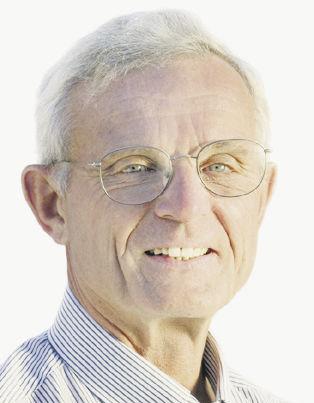
12 minute read
Safe and Legal Disposal of Animal Carcasses
As of May 13, 2020, Oregon Department of Agriculture has not heard from any cattle producers in Oregon who need to, or expect that they will need to, dispose of large numbers of animals due to higher than normal mortality rates from the COVID-19 pandemic. The following information is for producers who need to dispose of normal numbers of animal mortalities as well as for producers who wish to plan for unexpected circumstances.
Methods that are appropriate only for individual or small numbers of mortalities:
Advertisement
Natural Disposal: You must place the carcass at least half of a mile from any dwelling and at least a quarter of a mile from any open waterway and let scavengers eat the carcass.
Burial of a carcass(es): You may bury carcasses on your farm if the bottom of the hole is dry and the carcass is covered with hydrated lime. Carcasses should be buried at least 500 feet from surface waters or wells and have at least four feet of soil mounded on top to allow for settling as the carcass decomposes.
Methods that are appropriate for both individual and larger numbers of mortalities:
Composting: Composting dead animals and byproducts allows you to recycle the nutrients in the carcasses and is a sound environmental practice. You must have a composting plan on file with ODA and be implementing that plan. You may also need a DEQ permit. Landfill. Certain landfills are allowed to take carcasses as well as butchering waste. Call your local landfill to find out if they can accept animal carcasses. If the landfill does not, DEQ may grant an exception. Incineration. Animal mortalities and byproducts can be incinerated in a DEQ-approved incinerator or cremation unit. However, this option is expensive and not widely available. Open Burning. Animal carcasses and byproducts cannot be open burned. Forced air burning is a type of open burning and would require an air quality permit from DEQ.
Catastrophic Animal Mortality Management Plan. Burial of large numbers of carcasses, due to flood, pandemic, or other reasons, requires a Catastrophic Animal Mortality Management Plan submitted to DEQ and ODA for review and approval. A DEQ permit may be necessary. Contact DEQ to discuss.
For more information
Oregon Department of Agriculture Natural Resources & Pesticide Programs - (503) 986-4700. Ask for the Ag Water Quality Program or the Confined Animal Feeding Operation program.
Bob Barrows, Oregon Department of Environmental Quality - (541) 687-7354
Assistance is available from the USDA to help Oregon agricultural producers properly dispose of livestock that were depopulated because of the COVID-19 pandemic. USDA’s Natural Resources Conservation Service (NRCS) is accepting applications for the Environmental Quality Incentives Program (EQIP) for the Emergency Animal Mortality Management practice through June 5, 2020. Contact your local NRCS office for this signup. You can locate your local NRCS office at www.nrcs.usda.gov.
Mortality Management for Operations with CAFO Permits.
Permitted CAFOs need to follow their ODA-approved Animal Waste Management Plan (AWMP) on mortality management specific to their facility. If they are unable to follow the AWMP, they would need to contact their inspector to work on modifying the AWMP to include additional methods for mortality management / disposal. In most cases we should be able to modify the mortality management section of an AWMP with an amendment and create those with a phone conversation with the permittee. DEQ does permit landfills and several of the landfills do take mortalities, but have daily limits set by DEQ.
GENETIC MERIT SCORECARD:

A New Angus Association marketing tool that’s worth your attention.

By OCA’s Beef Cattle Improvement Chair Jon Elliott
After complaining for the last dozen years that there’s no follow-up (except calving ease EPDs) to benefit the cow/calf/ jceandsle@gmail.com yearling producer for selecting bulls with better EPDs, I’m glad to report that people in positions to do something about that problem have also been concerned.
The details do not really matter, but several years ago some bright thinkers around the Montana Cattlemen’s Association devised a system to rate various EPDs by how they should affect the value of calves. The program placed a dollar value on the rating and was put to some use, apparently mostly in Montana. About two years ago the Angus Association obtained the rights to the program. After some tweaks and updates the Genetic Merit Scorecard (GMS) was born.
Here, for the first time on a large scale (The Simmental folks have a roughly similar, but less vigorous program called Feeder Profit Calculator, FPC: https://simmental.org/site/index.php/ commercial-services/feeder-profit-calculator-fpc), you can attach a score or three scores, to your sale calves or yearlings that will give buyers information about the genetic capabilities of the calves or yearlings as feeders, as carcasses, and as how they might fit the various grids.
Until now the majority of cow/calf producers who sell calves or yearlings have had no incentive except vanity to buy bulls based on any EPD or genetic values beyond those related to calving, weaning, yearling, and maternal traits. No buyer has ever asked about feedlot or rail traits, or anything else about your bulls’ EPDs. Indeed, nearly all the requirements for Certified Angus Beef acceptance are carcass traits that cannot be known until the animal is on the rail. The same is true for the Hereford certified program. Why would anyone spend even a nickel to buy high carcass or feedlot EPD numbers at bull sales if they sell calves or yearlings?
For a few years, some reputable breeders offered to buy back calves sired by their bulls. The perception was that your calves would automatically be more valuable if you bought any bull from these breeders. No one said out loud that the calves were worth more, but the implication probably sold some bulls. And, to their credit, some breeders felt strongly enough about their bulls’ genetic traits, even the last to sell, that they were willing to get financially involved with calves sired by their bulls.
For as long as I can remember, producer reputation and history have been the drivers in our industry for buying calves and yearlings. Regionally, if your cattle were predictable over the years, buyers learned to bid accordingly, both to bid higher than the prevailing market price and, also, to bid lower, depending on your reputation. Still, if you sold calves or yearlings rather than kept at least some ownership, you could not participate in whatever happened on the rail. Grids and programs all kick in at the slaughterhouse; if your cattle finish well you get a premium, but if they do not then you sometimes get a deduction.
This may begin to sound like an infomercial for the Angus folks, but even though the Genetic Merit Scorecard (GMS) is Angus based and is an Angus marketing tool, it is worthy of your consideration and, I hope, an incentive for the other breeds to join in or develop their own similar www.orcattle.com | Oregon Cattleman
EXPLORING THE HERD

programs.
The Genetic Merit Scorecard is calculated for a specific set of calves; say your 2020 calf crop. It is derived from the EPDs of your bulls. The initial enrollment asks for at least ten years of bull records. The bulls would all need registration certificates and at least 75 percent must be Angus. If they are all Angus, you would simply report the registry numbers. If some are not Angus, you would submit their registry numbers plus $50 and the Angus staff will transpose their numbers to be usable in the GMS. There is no provision for not-registered bulls. I presume that using any not-registered bulls would preclude you from enrolling in the program.
The scorecard relies upon you keeping your own replacements. That is the case for most cow/calf producers, but it wouldn’t take much for the coder types to incorporate data from the outside herds if you consistently buy heifers or cows from the same few sources, especially if those sources also decide to use GMS or if their herds qualify to use GMS.
Each group of calves gets three scores and each score can range from 0 to 200, with 100 being average calves (Presumably, the 100 average score relates to the average of the composite EPD used to determine the score).
Beef Score: predicts the genetic potential for feedlot performance and carcass value. It is based on the composite $B EPD.
Feedlot Performance Score: signifies the enrollment group’s potential for post-weaning performance in the feedlot. It is based on the composite $F EPD.
Grid Score: predicts the enrollment group’s performance potential for carcass grid merit. It is based on the composite $G EPD.
You need not belong to the Angus Association to participate, but you must enroll in the AngusLink program. The AngusLink program is the division of the Angus Association that administers the USDA Process Verified Programs (PVP) within the breed. Several PVPs are available, but you need only enroll in the Age and Source Verification program to participate in the Genetic Merit Scorecard program, which is not a USDA PVP (this requirement may discourage some from enrolling. I will follow up on this and the other Process Verification Programs in future issues).
The scorecard has two immediate values to cow/calf producers. First, if your scores are over 100, your calves have been recognized genetically to be above average in the covered traits. Some producers consistently manage their herds and have reputations that will make this no surprise. But there are lots of operations with good management and good bulls and cows, who operate in harsher conditions that may mask the calves’ genetic potential, whose calves may not all look like club calves. This second group of producers may want to look seriously at the GMS program.
Second, if the scorecard values are lower than 100, then you will have a baseline to use for making improvements. There is no requirement that you publish the numbers or attach them in any way to your sale animals. Here, though, is a way to measure, and we all know that if you can measure it you can improve it.
To get started, beam up this link: http://www.angus. org/anguslink/ProducerPVP.aspx and http://www.angus. org/anguslink/AngusLinkEnrollmentFormAndManual. pdf?v=1
To enroll you must contact the Angus Association. I corresponded with Ginette Gottswiller, American Angus Association Director of Verification Services, as I tried to gain an understanding of the GMS program. Ginette and her staff are there to help, even though they seem to have a bias toward particular black cattle. If you have questions, call the numbers provided on the websites.
We are still going to be paid for pounds at least for the near term. Genetic Merit Scores are probably not going to catch on immediately with buyers. They are, however, a next step in helping producers realize more of the value in the beef chain. By adopting and consistently using GMS and other programs, each of the pounds we sell may become a little more valuable to buyers, or conversely, may be not less valuable as more discounts are applied. •
TO MY FELLOW PUBLIC LANDS RANCHERS


FROM BOB SKINNER, NATIONAL PLC PRESIDENT
In any typical year, you would be celebrating your new calf or lamb crop, having your first round of branding, or worrying about when it is going to rain. Instead, this year you are monitoring the markets and questioning what the industry will look like in the future. You have been asked to work harder and longer than in the past when most of us were already wondering how to put more hours in the day.
It is frightening to see how COVID-19 has affected our rural communities. Impacts to cattle and sheep producers are gut-wrenching, especially since most of us who live in very rural communities are treated like we live in a major city where the pandemic is running rampant. It is a grim scene, but it is important to remember you are not alone.
I know your struggle because I live it. I too am a rancher.
In challenging times in the past, we have gritted our teeth and carried on knowing we can “ride it out”. This is a different issue we are not accustomed to, and something we really do not have any answers for. Rest assured that our concerns are being voiced and heard at the highest level of government in Washington, thanks to our Public Lands Council (PLC) staff and officer team working countless hours on our behalf.
I currently serve as the president of the only national trade organization focused on issues affecting public lands and producers who contribute to land heath through grazing. We are committed to ensuring public lands ranchers have a voice amid the pandemic and that our industry can continue to work with confidence knowing we have people advocating for our interests.
PLC is guided by policy developed by ranchers who raise cattle and sheep across the western United States. This policy provides guidelines for my fellow officers and I to use to direct our staff in Washington, D.C.
At the start of the crisis, we were able to secure assurances from the Bureau of Land Management and Forest Service officials that grazing activities would continue as scheduled on public lands amid COVID-19. PLC worked with our state and national affiliates to focus on ensuring the supply chain remained running amid the pandemic, as we looked ahead to the ways COVID-19 could impact our livestock sales throughout the next several months.
As Congress looked for ways to support Americans through this crisis, we supported efforts to include cattle and sheep producers through new financial tools like the Paycheck Protection Program. Additionally, PLC sent a letter to the U.S. Department of Agriculture (USDA) and the Department of Health and Human Services outlining the unique challenges facing rural communities as they combat the impacts of COVID-19. This effort aimed to ensure the communities where we live and work are equipped and prepared for any healthcare needs.
PLC joined 43 other agriculture organizations in a letter to Congressional leadership thanking them for their role in assisting our producers and requesting further attention on a series of financial tools that www.orcattle.com | Oregon Cattleman










